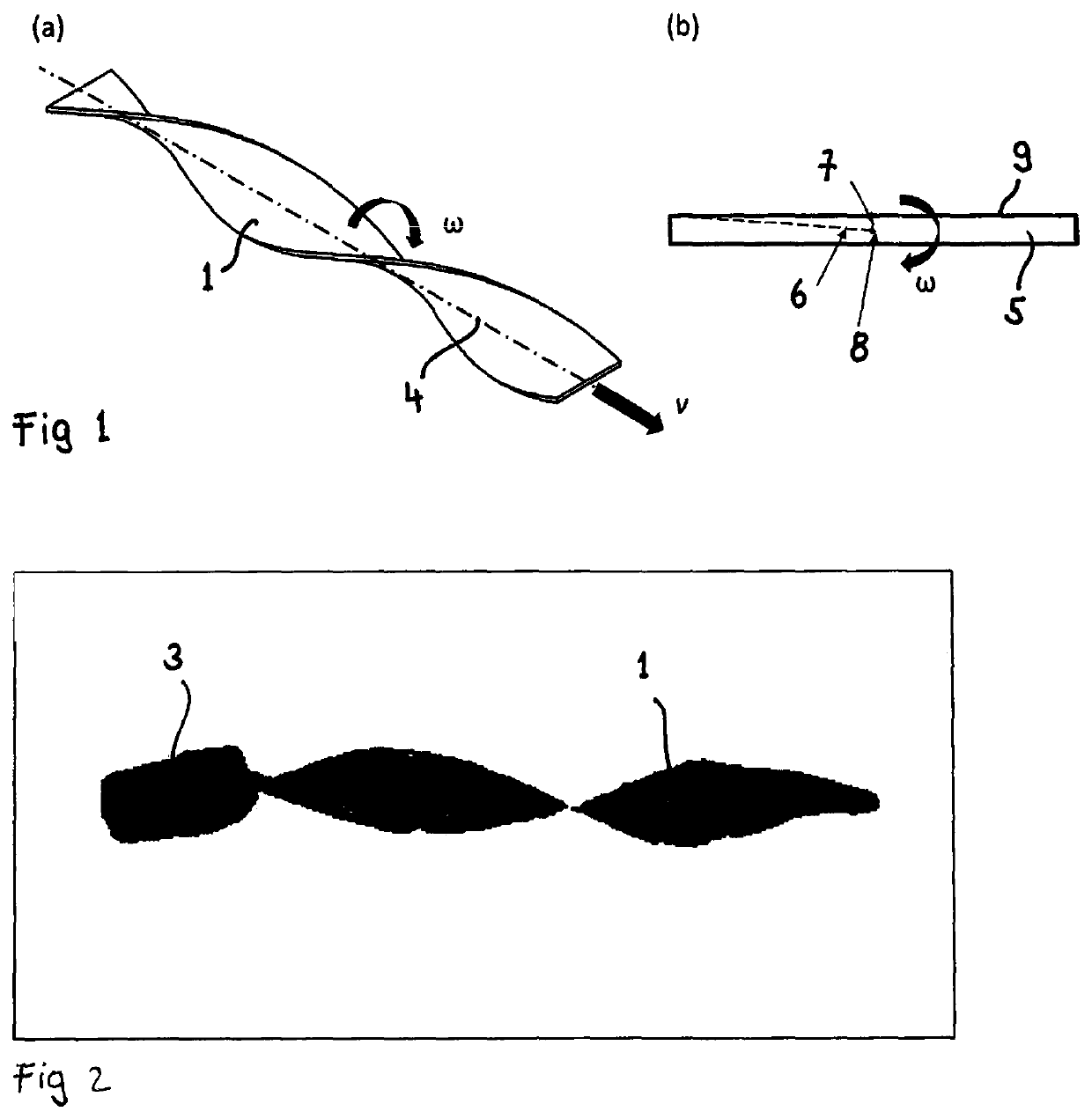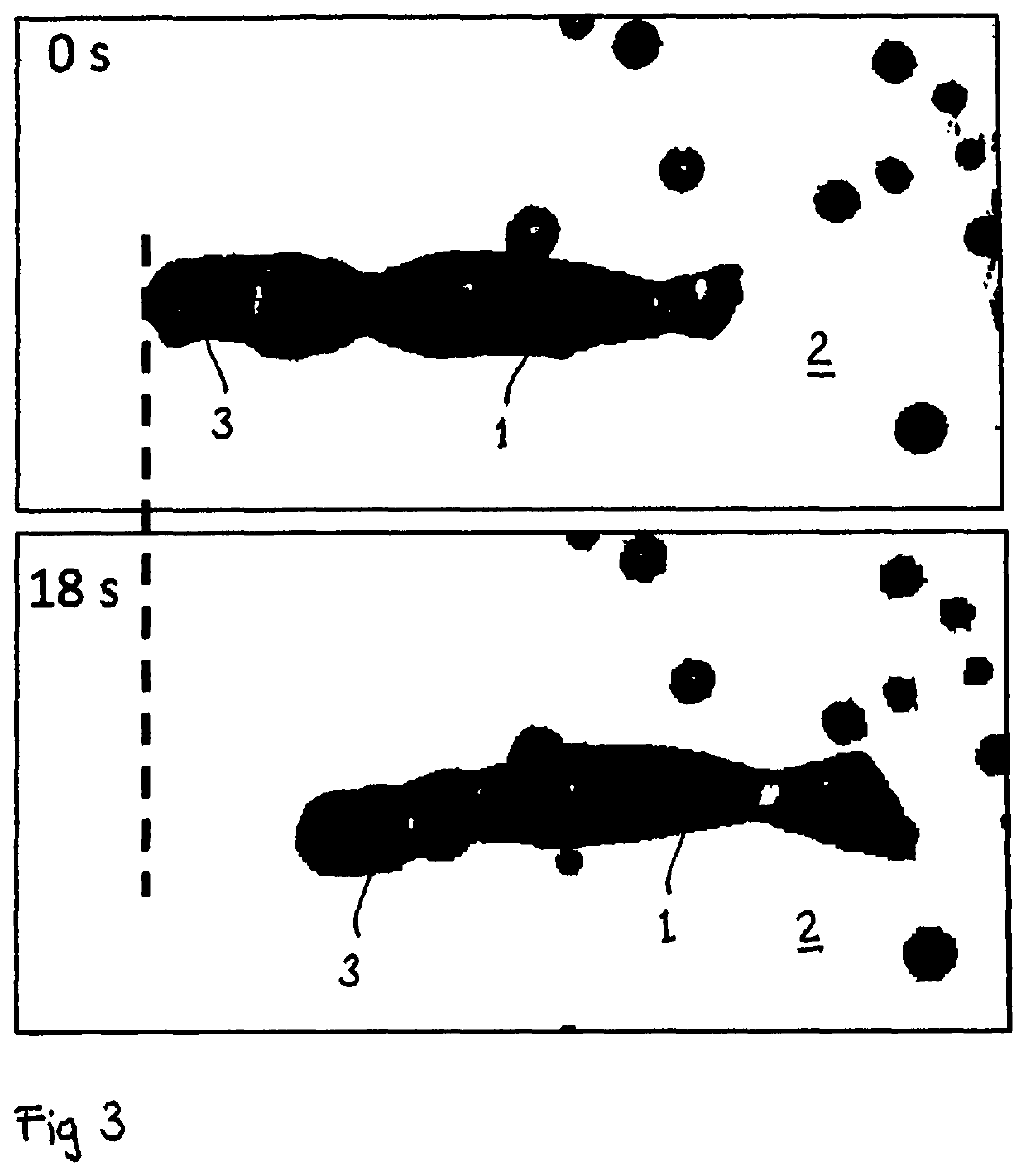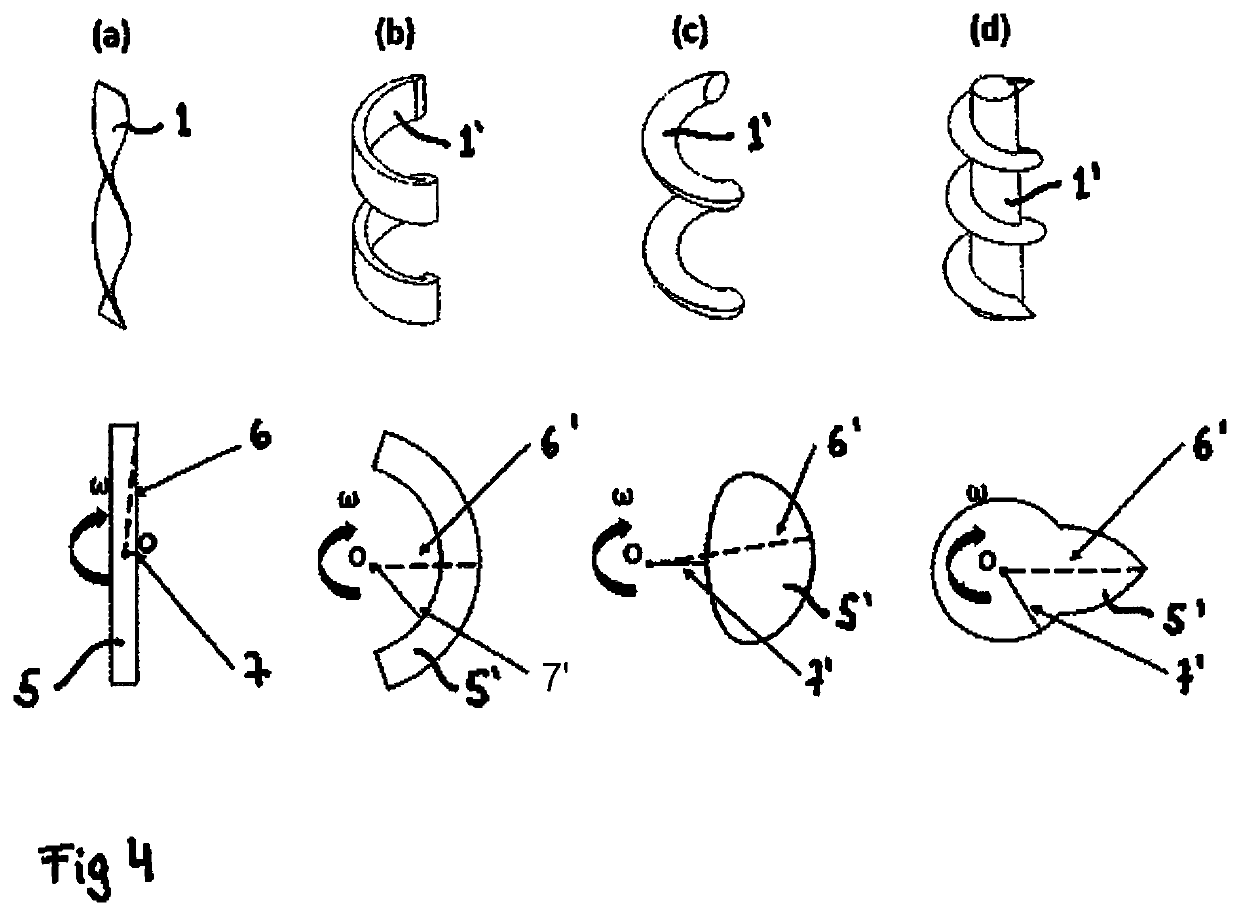Propeller and method in which a propeller is set into motion
- Summary
- Abstract
- Description
- Claims
- Application Information
AI Technical Summary
Benefits of technology
Problems solved by technology
Method used
Image
Examples
Embodiment Construction
[0024]Further preferred features of the invention which may be applied alone or in combination are discussed in the dependent claims, description below and the figures.
[0025]In a preferred embodiment of the invention, the aspect ratio of at least one cross section, preferably all cross sections, of the propeller, is / are 2 or more, more preferably 3 or more, more preferably 5 or more, more preferably 10 or more, more preferably 20 or more, more preferably 50 or more, more preferably 100 or more; the cross section(s) are related to the propeller's rotational axis or, alternatively, to the propeller's helical axis. This embodiment of the invention exploits the inventors' finding that a particularly high aspect ratio can entail a particularly strong propulsion. The cross section preferably is of a continuous shape.
[0026]Preferably, at least one cross section, more preferably every cross-section, of the propeller related to the propeller's rotational axis has a cross-sectional area that ...
PUM
 Login to View More
Login to View More Abstract
Description
Claims
Application Information
 Login to View More
Login to View More - R&D
- Intellectual Property
- Life Sciences
- Materials
- Tech Scout
- Unparalleled Data Quality
- Higher Quality Content
- 60% Fewer Hallucinations
Browse by: Latest US Patents, China's latest patents, Technical Efficacy Thesaurus, Application Domain, Technology Topic, Popular Technical Reports.
© 2025 PatSnap. All rights reserved.Legal|Privacy policy|Modern Slavery Act Transparency Statement|Sitemap|About US| Contact US: help@patsnap.com



